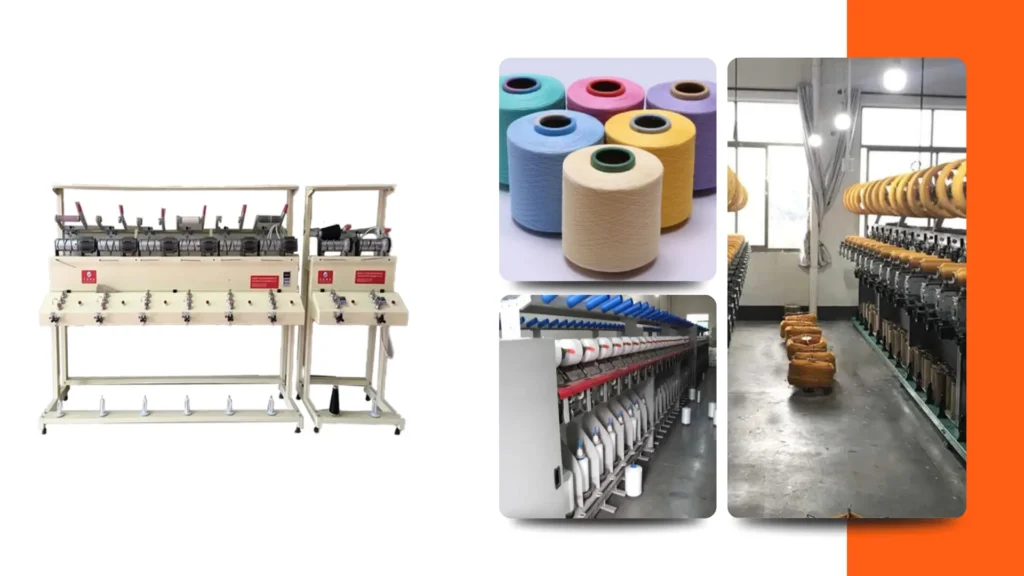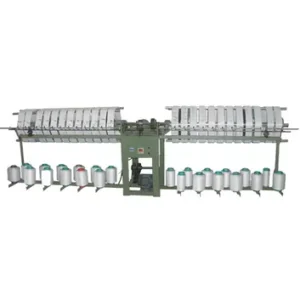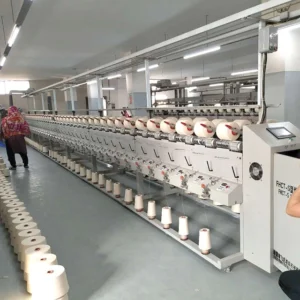The textile industry is one of the largest contributors to global waste and environmental degradation, with millions of tons of clothing ending up in landfills each year.
As consumers and businesses become more environmentally conscious, the concept of a circular economy has gained traction as a sustainable solution.
Unlike the traditional linear model of “take, make, dispose,” a circular economy focuses on reducing waste, reusing materials, and recycling resources.
For textile manufacturers, adopting circular economy practices not only benefits the environment but also offers economic advantages, such as cost savings and improved brand reputation.
This article explores how textile manufacturers can implement circular economy practices to create a more sustainable and profitable business model.
How Can Textile Manufacturers Design for Circularity?
Use of Sustainable Materials.
It starts from using sustainable materials-such as organic cotton, recycled polyester, or biodegradable fibers.
These materials are also faster recycled and cause less environmental harm than traditional textiles.
As an example, most organic cotton is grown without synthetic pesticides and fertilizers, thus decreasing the environmental burden.
Recycled polyester diverts post-consumer plastic bottles from landfills and minimizes the need for virgin petroleum-based raw materials.
Manufacturers will, therefore, create textiles that will be beneficial to both the environment and minds of well-meaning climatism-oriented consumers.
Designing for Durability
Another aspect of making durable products is to ensure that they last because this will reduce the number of replacements over time that ultimately end up as waste. This involves using high-quality materials, durable stitching, and evergreen designs that stand the test of time as far as fashion is concerned.
A well-built pair of jeans that can be worn and withstands the brunt of use for years is less likely to be dumped into a landfill than a cheap, fast fashion product. It also improves customer satisfaction because the consumer values products that will be used for long periods of time due to performance.
For most owners, durability guarantees less waste generation and gives them a good reputation for quality and reliability.
Modular and Repairable Designs
It can be made fairly easily by designing modular garments or fabrics which can be easily repaired or upgraded for lifecycle extension.
Replaceable zippers, buttons, and other similar components will encourage the consumer to repair rather than discard a garment.
Modular designs also lead to customization, whereby consumers can upgrade or personalize their garments without having to get them custom made.
This results not only in waste prevention but also in building a closer relationship with the product for consumers as they invest time and effort in repairing and maintaining a valuable possession.
By promoting and developing modular and repairable devices, manufacturers can design products which will then follow the rule of the circular economy.
What Role Does Recycling Play in Circular Textile Manufacturing?
Such Rehabilitation for Post-Consumer Waste
The recycling of post-consumer textiles, for instance, old clothes, into new fabrics, reduces the requirement for virgin materials.
Advanced technologies now produce high-quality fibers from worn and torn textiles for use in completely new products.
Old clothes can be recycled mechanically and then converted into fiber capable of being formed into new yarns, such as in employing chemical recycling technology to breaking textiles into their base raw materials for later reuse.
Thus, with post-consumer waste recycling, manufacturers close the loop on textile production, minimizing waste and conserving resources.
This process also confronts the growing problem of textile waste accounting for a big chunk of the world’s landfill contents.
Closed-Loop Recycling Systems
The systems of closed-loop recycling are those in which the waste generated during the manufacturing process can be recycled back into the process.
In this way, fabric scraps gathered can be recycled into new textiles either by appropriate processing or by using them to make new ones.
First of all, this method minimizes production waste and maximizes the efficiency of resource use, so the materials can keep cycling totally throughout the production process.
Closed-loop recycling systems go even further by slightly decreasing the direct need for raw material extraction concerning fiber production and cutting environmental impacts towards a whole industry, the textile industry.
Closed-loop recycling, therefore, allows manufacturers to build a more self-sustaining production model with better sustainability.
Partnership with Recycling Facilities
It is possible to help companies have flexibility in re-directing textile waste to the different channels of sustainability commitment and compliance to the relevant environmental regulations by partnering with specialized recycling facilities in proper sorting, processing, and recycling of textiles.
A textile manufacturer, for example, could collaborate with recycling facilities in the facility development of optimized solutions to address specific forms of waste, like blended fabrics or synthetic fibers.
By using expertise developed with recycling partners, manufacturers can improve the process and efficiency of performing recycling initiatives, leading to a greater diversion of materials out of landfill to be reintegrated back into the production cycle.
How Can Manufacturers Promote Reuse and Second-Life Solutions?
Take-Back Programs
Implementing take-back programs encourages customers to return used clothing to the manufacturer.
These items can then be refurbished, resold, or recycled, reducing waste and creating new revenue streams.
For example, a clothing brand might offer discounts or incentives to customers who return old garments, which are then cleaned, repaired, and resold as second-hand items.
Take-back programs not only extend the lifecycle of products but also strengthen customer loyalty, as consumers appreciate brands that take responsibility for the end-of-life management of their products.
Resale and Rental Models
With the options of resale and rental, clothing can remain relevant and less new production in demand.
This model is especially popular among fast fashion, where consumers could rent high-end clothes for special occasions.
A luxury brand may offer an evening gown or suit rental, allowing customers to wear high-end clothing minus the commitment of a purchase.
Resale platforms promote reuse and reduce waste by allowing consumers to buy and sell their pre-owned items.
This presents manufacturers with a new market opportunity as fast fashion grows in demand for sustainable options.
Upcycling Projects
It is the process of converting used or discarded textiles into new materials with a higher value.
Manufacturers, for instance, can make accessories, home décor, or even clothes from fabric scraps or used textiles.
Upcycling reduces waste while creating value for materials that would otherwise be thrown away.
Including an upcycling component in their business model can showcase a manufacturer’s innovative abilities and level of commitment to sustainability; thus, appealing to eco-aware customers.
How Can Technology Support Circular Economy Practices?
Digital Product Passports
Digital product passports provide consumers with materials, origin, and recycling instructions about a product.
Such transparency encourages responsible consumption and at the end of the product life provides information for recycling.
Therefore, empowering consumers to make informed choices and engage in circular practices like recycling or returning used items.
AI and Data Analytics
AI and data analytics can optimize production activities and reduce waste while identifying opportunities for recycling.
Data analytics can also analyze material usage and waste generation patterns, helping manufacturers identify inefficiencies and implement corrective measures.
By integrating AI and analytics into decision-making, manufacturers can enhance the efficiency of their operations, allowing them to make data-driven decisions towards their circular economy goals.
Advanced Recycling Technologies
Innovative technologies such as chemical recycling break textiles down to raw components for the generation of new fibers without jeopardizing their quality.
Such innovations make recycling viable with other efficiencies and scales.
By investing in advanced recycling technologies, manufacturers can effectively overcome the hindrances of traditional recycling techniques, thereby paving the way for establishing a sustainable production system.
What Are the Long-Term Benefits of Circular Economy Practices?
Reduced Environmental Footprint
Reduced wastes, pollution, and resource consumption from circular acts improve the sustainability of the planet’s ecosystems. These also enhance the reputation of a company.
Thus, such actions will still benefit the environment while striking a chord with consumers attracted to sustainable initiatives.
Cost Savings and New Revenue Streams
Increased production costs and new revenue streams can be made possible for manufacturers through material reuse and waste reduction via resale, renting, or upcycling initiatives.
For example, a manufacturer recycling fabric scraps into new products could decrease raw material costs and make extra income through sales of recycled items.
Similarly, a rental service can provide steady revenue while extending product lifecycles.
Manufacturers can achieve economic and environmental benefits by adopting circular practices.
Increased Brand Loyalty
Sustainable practices are earning increasing precedence in consumers’ choice positions.
Companies implementing circular practices can therefore attract this green clientele and find long-term brand loyalty.
Take-back programs and using recycled materials are some of the distinguishing features for brands trying to reach the eco-conscious consumer; their competitors are not quite stepping up to the plate.
Manufacturers strengthen brand reputation and customer loyalty when they tap into consumer values.
And More:
- Ways to Achieve Carbon Neutrality in the Textile Industry
- How Can Textile Factories Reduce Their Carbon Footprint?
- How Automation Equipment Facilitates Green Textile Production
How Can Manufacturers Start Their Circular Economy Journey?
Waste Audit
A waste audit would assist the manufacturer in defining areas where waste might be reduced or recycled.
This baseline is a great starting point for designing circular strategies.
For instance, a manufacturer would analyze the entire production process for sources of waste such as fabric scraps and unsold items.
By grasping these waste streams, a manufacturer can target initiatives at preventing waste and increasing resource efficiency.
Be Clear on Sustainability Goals
When establishing clearly defined goals, such as a percentage of waste that should be avoided or increased levels of recycled materials, these give direction and good reasons for implementing circular practice.
In the case of a manufacturer, it might state it will recycle 50% of its fabric waste in the next two years.
By having goals that are both measurable and achievable, thus monitoring their progress along with showing their commitment to sustainability are turned into reality.
Collaborate with Industry Partners
Working with other businesses, recycling facilities, and industry organizations will help the manufacturers share knowledge and arrange resources and scale up circular initiatives.
For instance, a manufacturer might partner with a recycling facility to establish closed-loop management for its textile waste.
Cooperation will empower industry partners to confront challenges and create innovative solutions in favor of circular economy objectives.
Conclusion
Implementing circular economy practices in textile manufacturing is not just an environmental imperative but also a strategic business decision.
By designing for circularity, promoting reuse and recycling, leveraging technology, and overcoming challenges, manufacturers can reduce waste, save costs, and enhance their brand reputation.
The transition to a circular economy may require effort and investment, but the long-term benefits for the environment, society, and the bottom line make it a worthwhile endeavor.
As the textile industry continues to evolve, circular practices will play a crucial role in shaping a more sustainable and profitable future.












